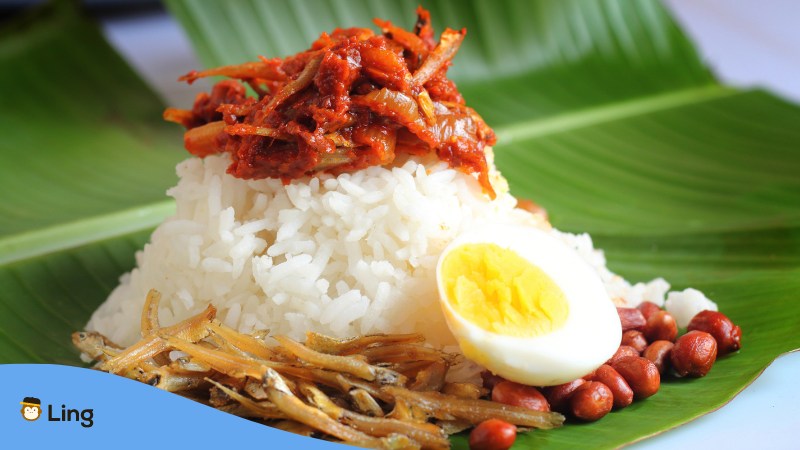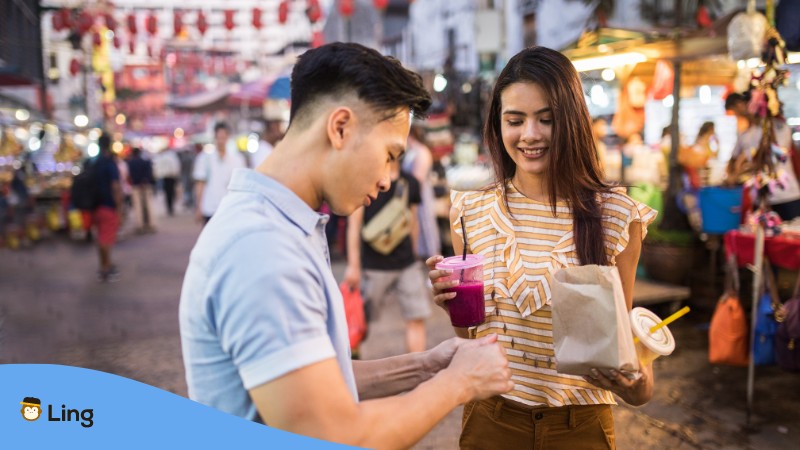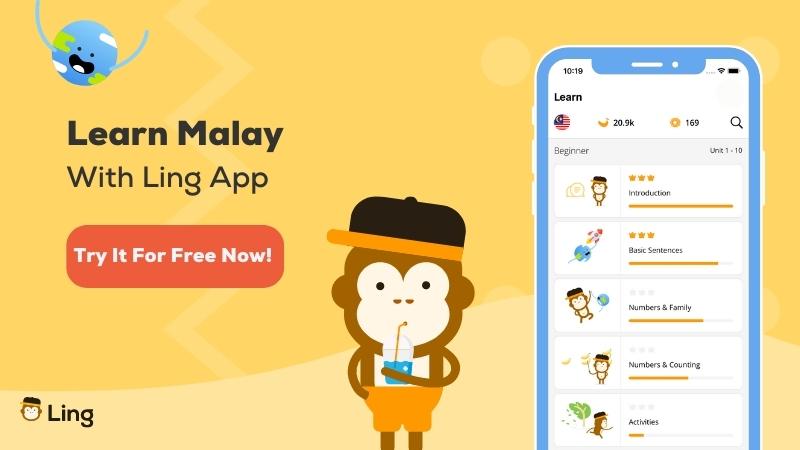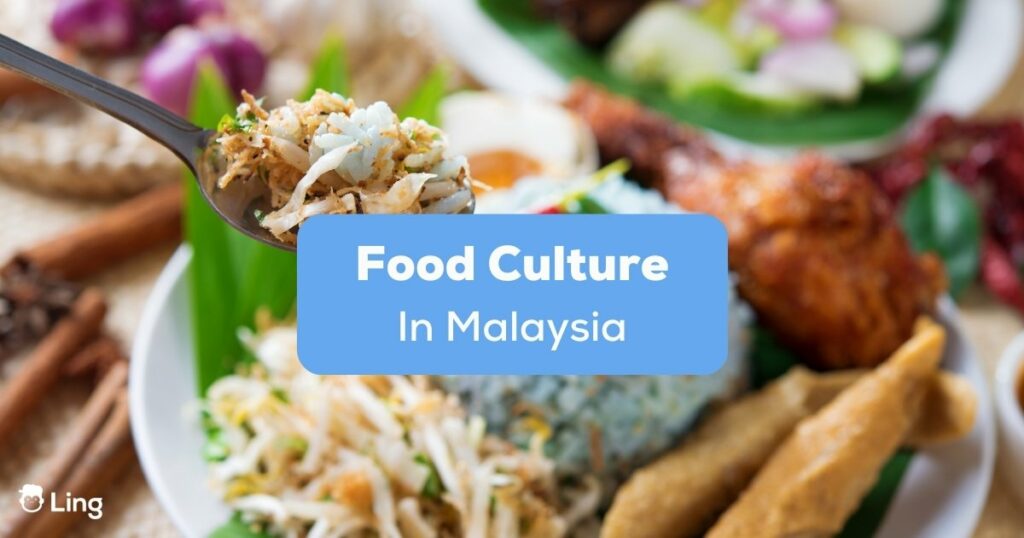Are you a foodie looking for a new culinary adventure? Well, you’ve come to the right place because the food culture in Malaysia is rich and diverse, which is worth exploring! From the use of coconut milk in traditional dishes to the blend of flavors from different cuisines, the food in Malaysia reflects the country’s heritage and the influence of other cultures.
Whether it’s Nasi Lemak or Satay, the variety of dishes in Malaysian cuisine is sure to tantalize your taste buds! Join me as we discover the main ingredients, ethnic cuisines, popular dishes, street food scenes in Malaysia, and some Malay phrases. So, buckle up and get ready to learn more about this unique food culture!
The Main Ingredients In Malaysian Cooking
In Malaysian food culture, there are a few staple ingredients that form the backbone of the cuisine. Let’s have a look!
The Staple Ingredients
Coconut milk, soy sauce, chili paste, and shrimp paste are some of the ingredients you’ll find in almost every Malaysian dish. These ingredients and others create a harmonious blend of flavors that make Malaysian cuisine unique.
The Significance Of Coconut Milk
Coconut milk is a primary ingredient in traditional dishes and plays a significant role in shaping the flavor profile of Malaysian cuisine. From adding creaminess to curries to creating the perfect balance of flavors, coconut milk is a key ingredient in many of the country’s famous dishes.
Other Main Ingredients
In addition to coconut milk, soy sauce, spring onions, chili paste, and shrimp paste also play a big role in the food culture in Malaysia. Soy sauce adds saltiness to dishes, while chili paste adds a spicy kick. Shrimp paste, on the other hand, adds a unique umami flavor. These ingredients create a delicious symphony of flavors that will make your appetite dance when used together.
Useful Phrases In A Malaysian Market
Here are some conversational Malay phrases that may be useful in shopping for food ingredients in a market in Malaysia.
| English | Malaysian |
| I want to buy garlic. | Saya mahu beli bawang putih. |
| How much is the price? | Berapa harganya? |
| Do you have anything else? | Ada lagi yang lain? |
| I want only a little. | Saya mahu sedikit sahaja. |
| This is good enough. | Ini cukup baik. |
| Is this halal? | Ada halal? |
| I want to buy this. | Saya nak beli ini. |
| Can you give a discount? | Boleh bagi diskaun? |
The Three Major Ethnic Groups And Their Cuisines
Do you know the unique blend of flavors that make up the delicious cuisine of Malaysia? Well, let me give you a quick rundown of the main players behind this yummy scene. The cuisine of Malaysia is a delightful reflection of the country’s diverse population, with Chinese, Indian, and Malay cuisines all having a major influence on the local food culture. That’s right, three fantastic culinary worlds combined into one!
Chinese Cuisine
Starting with Chinese cuisine, you’ll find dishes like Char Kway Teow (stir-fried flat noodles) and Mee Goreng (fried noodles) that are popular across the country. These dishes are often spiced with chili paste and soy sauce, making for a tantalizing combination of flavors.
Indian Cuisine
Moving on to Indian cuisine, the spices and rich flavors of dishes like Chicken Curry and Beef Rendang will leave you smacking your lips. Rice dishes like Nasi Lemak (cooked in coconut milk) and Roti Canai (a flaky flatbread) are also must-tries. They are commonly served with sides like boiled eggs and bean sprouts.
Traditional Malay Cuisine
Last but not least is the traditional Malay cuisine. Dishes like Satay (grilled meat skewers) and Laksa (a spicy noodle soup) are staple foods in Malaysia and are often enjoyed with rice cooked in coconut milk. The unique blend of spices used in these dishes, such as lemongrass and tamarind juice, give them a truly authentic taste that can’t be found anywhere else.
So, next time you try a Malaysian dish, think about the rich cultural heritage that goes into every bite!

Popular Dishes In Malaysian Food Culture
Here are some other traditional dishes in Malaysian cuisine that are worth trying:
- Roti Canai: a kind of Indian-influenced flatbread, usually served with curry or dal.
- Beef Rendang: a slow-cooked, flavorful, rich beef dish simmered in spices and coconut milk.
- Chicken Curry: a spicy and delicious dish made with tender pieces of chicken in a rich and aromatic sauce.
- Mee Goreng: a stir-fried noodle dish made with yellow noodles, vegetables, and protein (be it chicken, beef, shrimp, or tofu).
- Noodle Soup: a delicious and comforting dish made with noodles and broth, served with various ingredients such as minced meat, boiled eggs, and vegetables.
- Fried Rice: a staple food made by stir-frying rice with ingredients such as eggs, vegetables, and meat.
- Mamak Stalls: a street food vendor serving Indian-Muslim cuisine, famous for dishes such as roti canai and teh tarik (pulled tea).
- Cendol: an iced dessert in Malaysia made of creamed corn, glutinous rice, coconut milk, kidney beans, palm sugar syrup, and pudding.
How These Dishes Are Served
If you’re a fan of cuisines in Southeast Asia, you might already know this fact about Malaysia, but in this country, many of the classic dishes are served on a banana leaf. Not only does it add a subtle and delicious flavor to the food, but it also acts as a super convenient (and eco-friendly!) plate. How cool is that?

Helpful Vocabulary When Eating In Malaysia
These basic words and phrases in Malay may come in handy when eating out in Malaysia:
| English | Malaysian |
| Saya makan ini. | I’ll have this. |
| Not spicy, please. | Tidak pedas, sila |
| How much is it? | Berapa harganya? |
| I am a vegetarian. | Saya vegetarian. |
| Can I eat with my hands? | Saya boleh makan dengan tangan? |
| Can I have a spicy Laksa? | Boleh saya dapatkan laksa yang pedas? |
| Delicious | Sedap |
The Significance Of Street Food In Malaysian Culture
Street food stalls play a significant role in the food culture of Malaysia. They offer an affordable and convenient option for Malay people and provide tourists with an authentic experience of the city’s flavor.
These stalls, especially in Kuala Lumpur, are a testament to the local chefs’ creativity and ingenuity, and love for food. In our opinion, popular street food items like Fried Chicken, Fried Noodles, and Noodle Soup are a must-try for anyone visiting the city.
The Importance Of Halal Food In Malaysian Cuisine
Yes, it’s hard not to be tempted by the delicious aromas that waft from every street corner. But, there’s something else that makes the food culture in Malaysia unique – Halal food.
Halal food is not just about what Malaysians eat, but it’s also an important aspect of the country’s religious and cultural values. Islam is the main religion in Malaysia, and Halal food is an essential part of the Muslim faith. Here are some facts about Halal food and its significance in the food culture in Malaysia:
- Halal food is prepared according to Islamic dietary laws, which is of great importance to Muslims in Malaysia.
- The strict adherence to Halal rules in food preparation means no pork or alcohol is used, and the meat must come from animals that have been slaughtered in a specific way.
- Malaysia has a diverse Halal culture, with various dishes available, including traditional Malaysian dishes, Indian food, and Western cuisine.
- Halal-friendly preparation methods ensure that all food is clean and hygienic, making Malaysia a welcoming destination for food lovers of all backgrounds.

Explore The Food Culture In Malaysia With The Ling App
To sum it up, the food culture in Malaysia is flavorful, making it a food lover’s paradise! With its diverse range of flavors and cooking techniques, it’s no wonder that it has become a significant tourist attraction.
So, if you’re a foodie, you definitely need to add Malaysia to your bucket list! And while at it, why not learn Malaysian with Ling? With more than 60 languages, you can immerse yourself in the culture and food like never before. Download the app now on iOS or Android!



































































